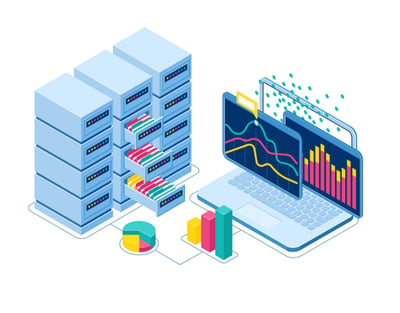Leveraging Supply Chain Network Optimization to Find The Right Balance Of Service Level And Cost
The backbone of any business is its customers, making it crucial to meet their expectations through superior service. However, striking a balance between exceptional customer service and cost-effectiveness is a universal challenge, regardless of a company's size. Supply chain models are built to help organizations compare scenarios and analyze trade-offs to find the right balance to meet their business needs. A supply chain network optimization model enables comprehensive visibility of a supply chain and the ability to determine optimal footprints and flows by providing insights into each scenario. The objective of network design tools like simulation, optimization, and Digital Twin allows business leaders to satisfy the customers' needs while maintaining or even reducing supply chain costs.
How The Business Objective Guides Data Aggregation
A successful supply chain network optimization project starts with identifying the business objective(s) and the expected decisions the team will take based on the output of the model. This is a pivotal step that should engage the entire team. The clarity of the objectives and the expected outcomes set the foundation for the modeling process. The modeling team will use the information to guide the scope and data requirements, and sure they build the right model required to answer the business questions.
In an ideal scenario, the modeler could feed all of the data into the model, run it, and gather results. However, that is rarely the best practice when building a supply chain network optimization model. One consideration for the team is the model run time; operational constraints such as managing an extensive product range or nationwide shipping, can considerably lengthen the model’s runtime. Moreover, scrutinizing and extracting meaningful insights from voluminous data can turn into a laborious task. In most cases, the modeling team needs to aggregate the data to an appropriate level that a) answers the business question(s) and b) minimizes the runtime of the model. Determining the optimal level of data aggregation comes from planning, experience, and experimentation.
Data aggregation can significantly enhance the efficiency of your model's runtime and simplify the process of identifying actionable decisions. A practical strategy to aggregate data is by establishing the 'end customer' in your model. This approach paves the way for targeted results that align with the organization's specific goals.
Adapting The Aggregation Strategy to Business Goals and Data Availability
Determining the 'end customer' involves aligning organizational goals with the data at hand to choose the appropriate level of aggregation. For businesses that cater to a modest number of clients nationwide, retaining all customers in the model without aggregation might be feasible. When control is limited to the distribution of shipments between centers, the 'end customer' could be the distribution center itself.
However, for companies that operate on an e-commerce model or ship directly to individuals across the country, a need for customer base aggregation arises. In such cases, location proves to be an effective parameter for aggregation. Choosing between methods such as 3-digit zip codes, 2-digit zip codes, states, regions, or markets depends on the business's goals and the specifics of their data.
Questions such as whether precise shipping costs to everyone are necessary, or if an estimate to a state will suffice, come into play. If the state level appears too broad, it can be further refined by using zip codes, with aggregation to the first 2 or 3 digits for a higher level of abstraction.
Once the customer aggregation level is defined, it is crucial to ensure that the supporting data is available. Queries about methods to aggregate shipping or processing costs to a 3-digit zip code, or whether the business operates its own fleet or relies on a shipping company, need to be addressed. The answers to these questions guide the customer aggregation strategy, ensuring a seamless alignment with the business objectives.
The Role of Aggregation in a Supply Chain Network Optimization Model
Customer aggregation doesn't adhere to a 'one-size-fits-all' principle; factors like business objectives, supply chain structure, and accessible data all interplay in constructing a supply chain model. This article discusses customer aggregation strategies, considering elements such as the distribution center from which they are dispatched, the physical locations of customers, and scenarios with no aggregation.
If the model continues to exhibit prolonged run times or necessitates extensive result-cleaning, additional aggregation can be introduced in areas like product categories, time periods, or sources. A best practice in supply chain model creation is to maintain a consistent focus on the model's overarching objectives, and the data fed into the model, and maneuver the model towards producing actionable decisions.
Once the suitable customer aggregation level aligning with the data and objectives is determined, the exciting phase of model creation commences!
Data aggregation plays a crucial role in optimizing model runtimes and extracting actionable insights. Meet with SimWell to discuss various aggregation strategies based on business goals, supply chain structure, and available data. Together, we'll help you improve productivity levels and reduce costs. By aligning your aggregation with objectives, businesses like yours can construct efficient supply chain models and make informed decisions to meet your needs while reducing costs. Let’s talk today!







